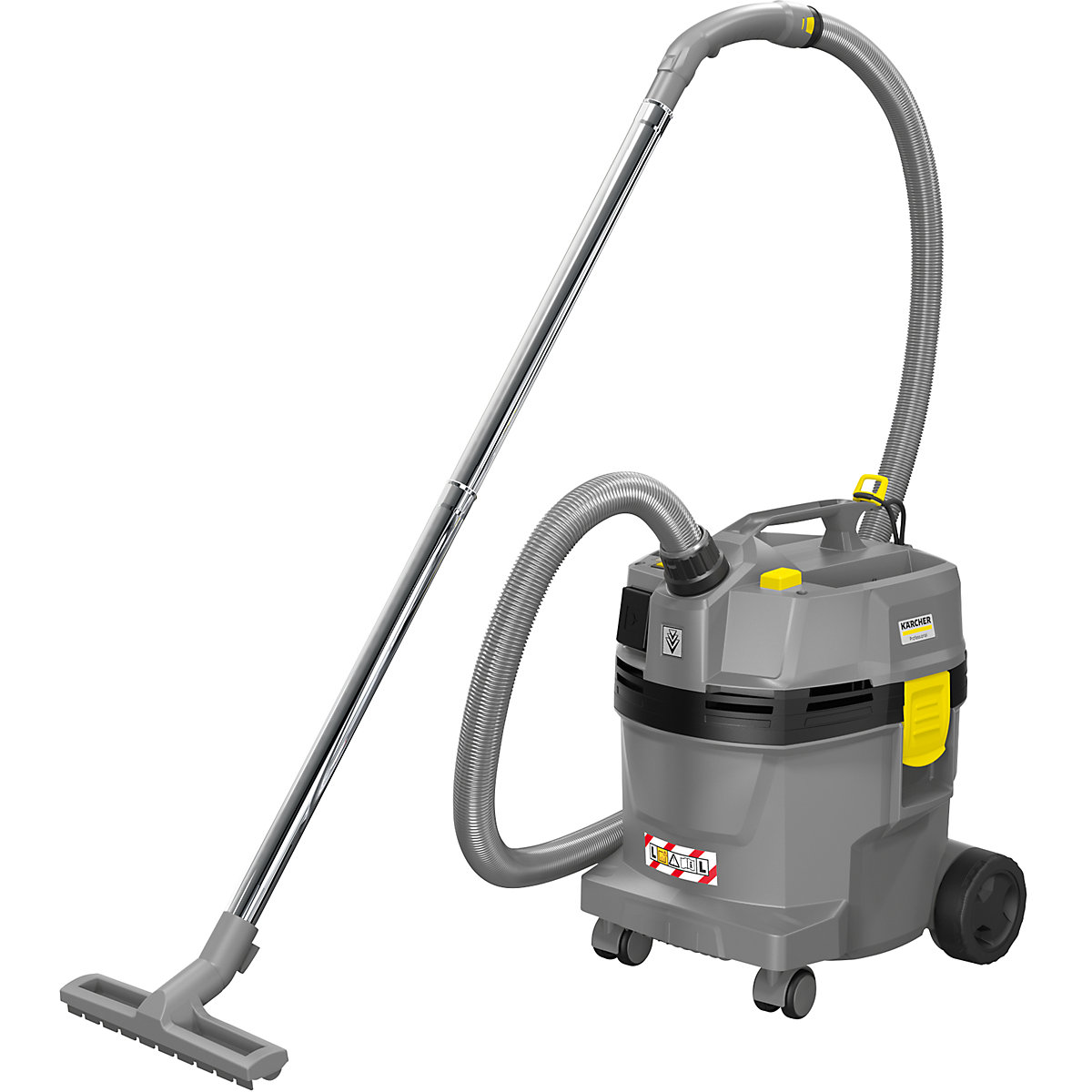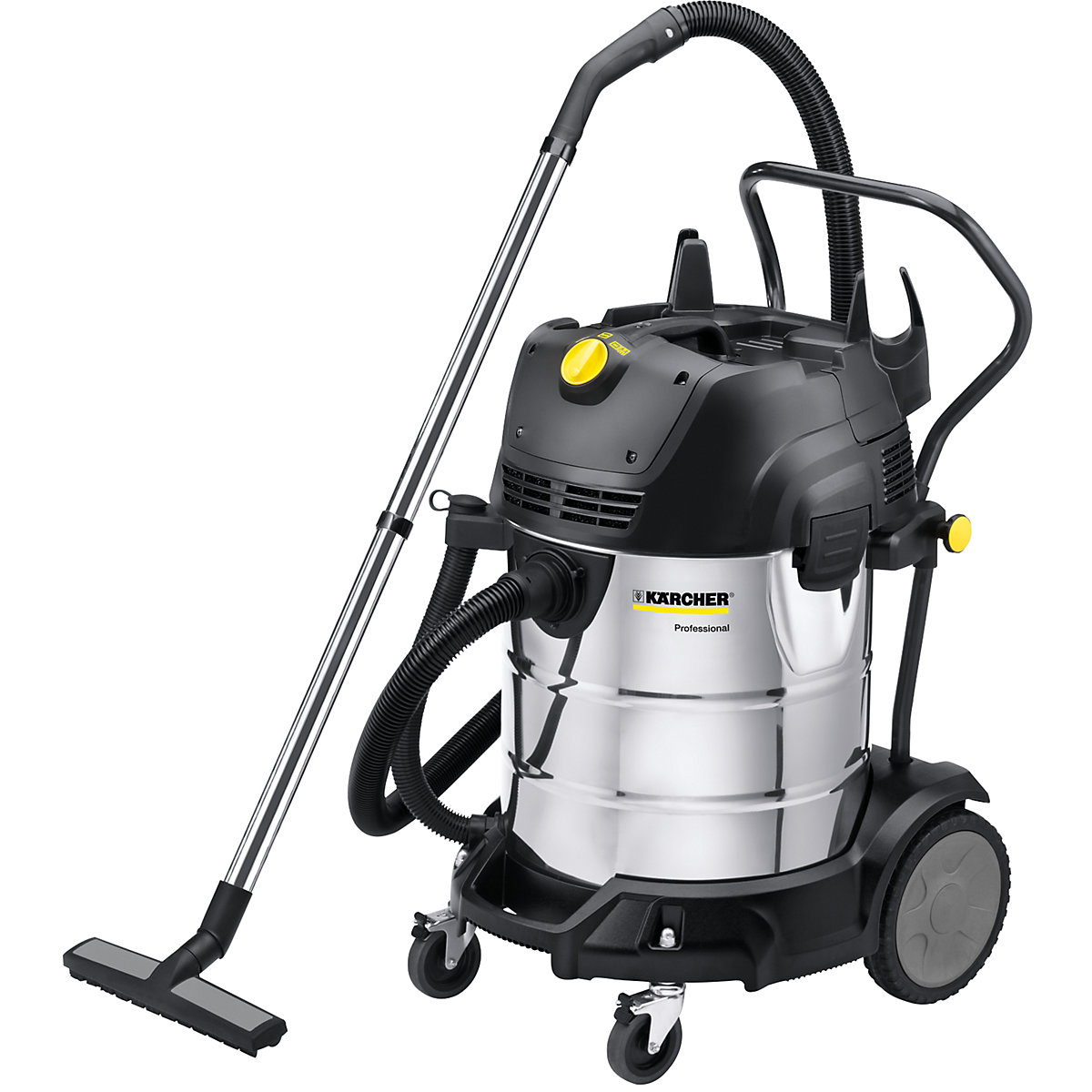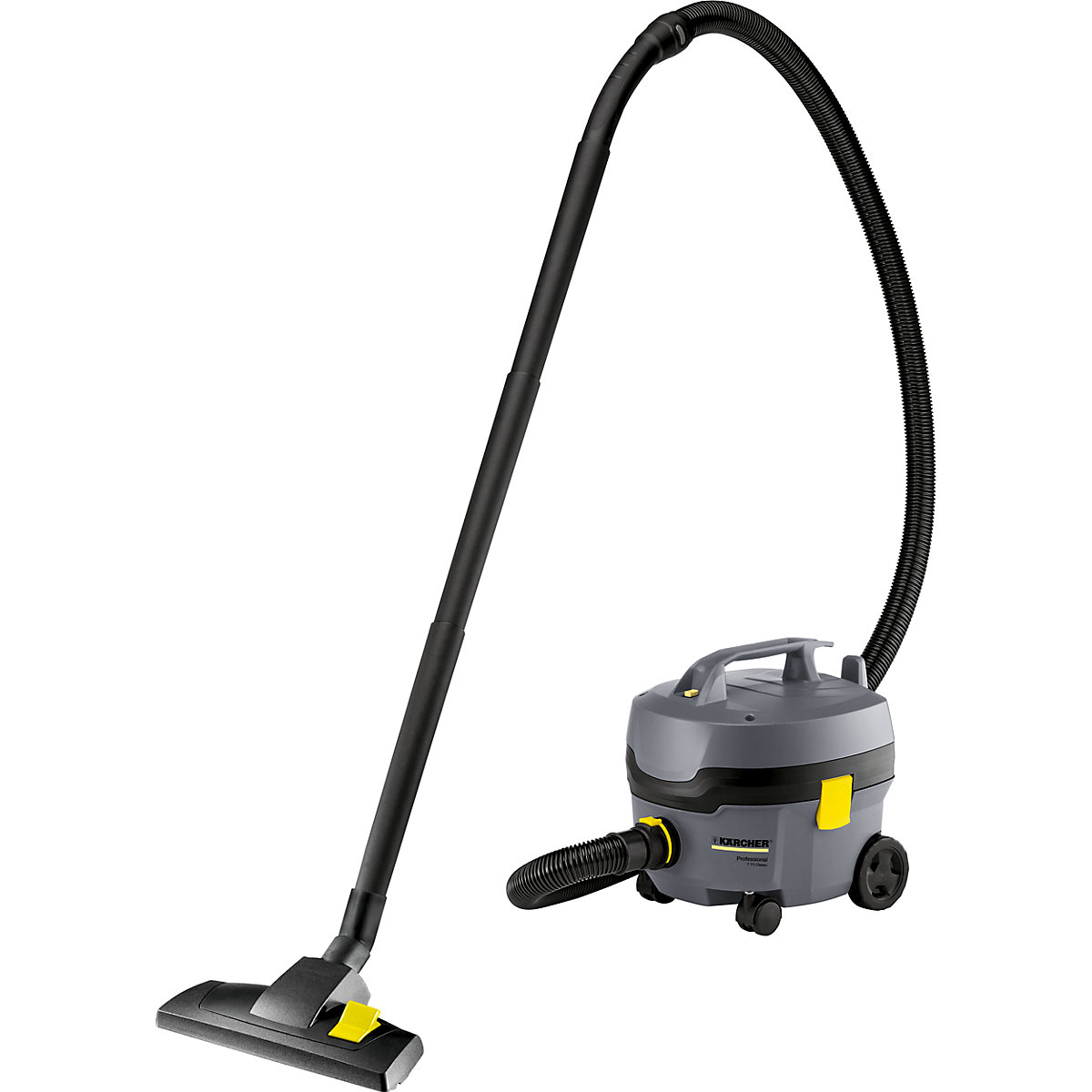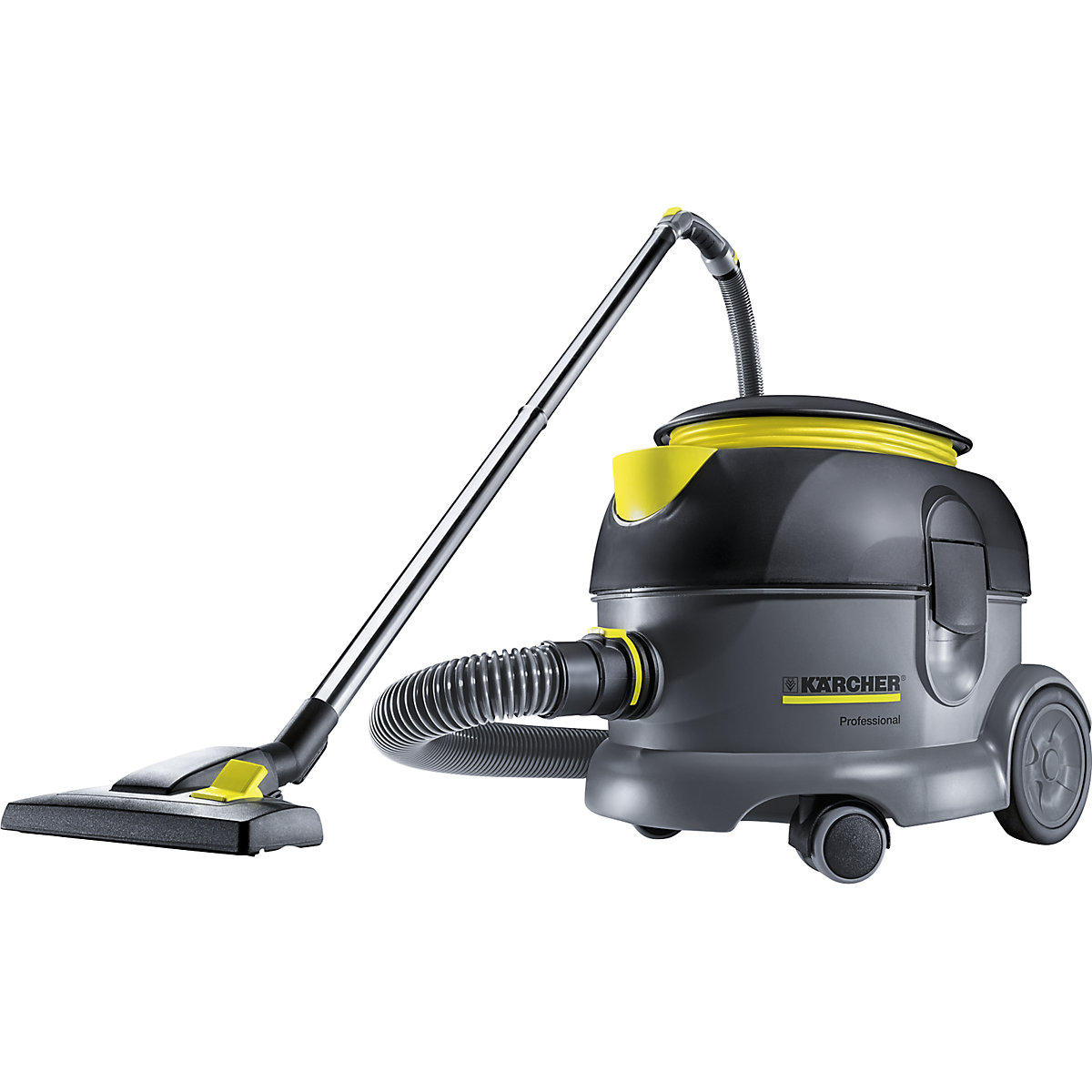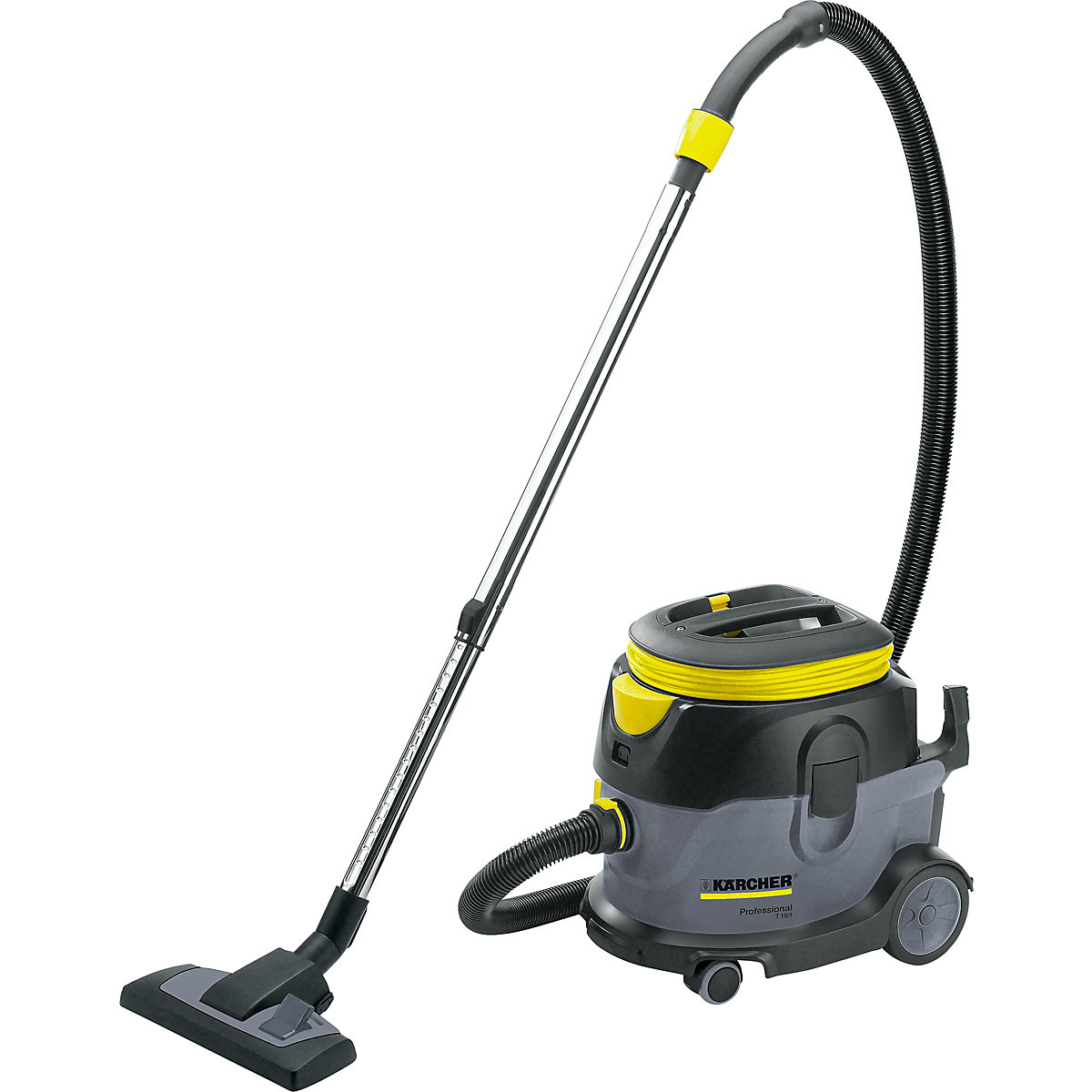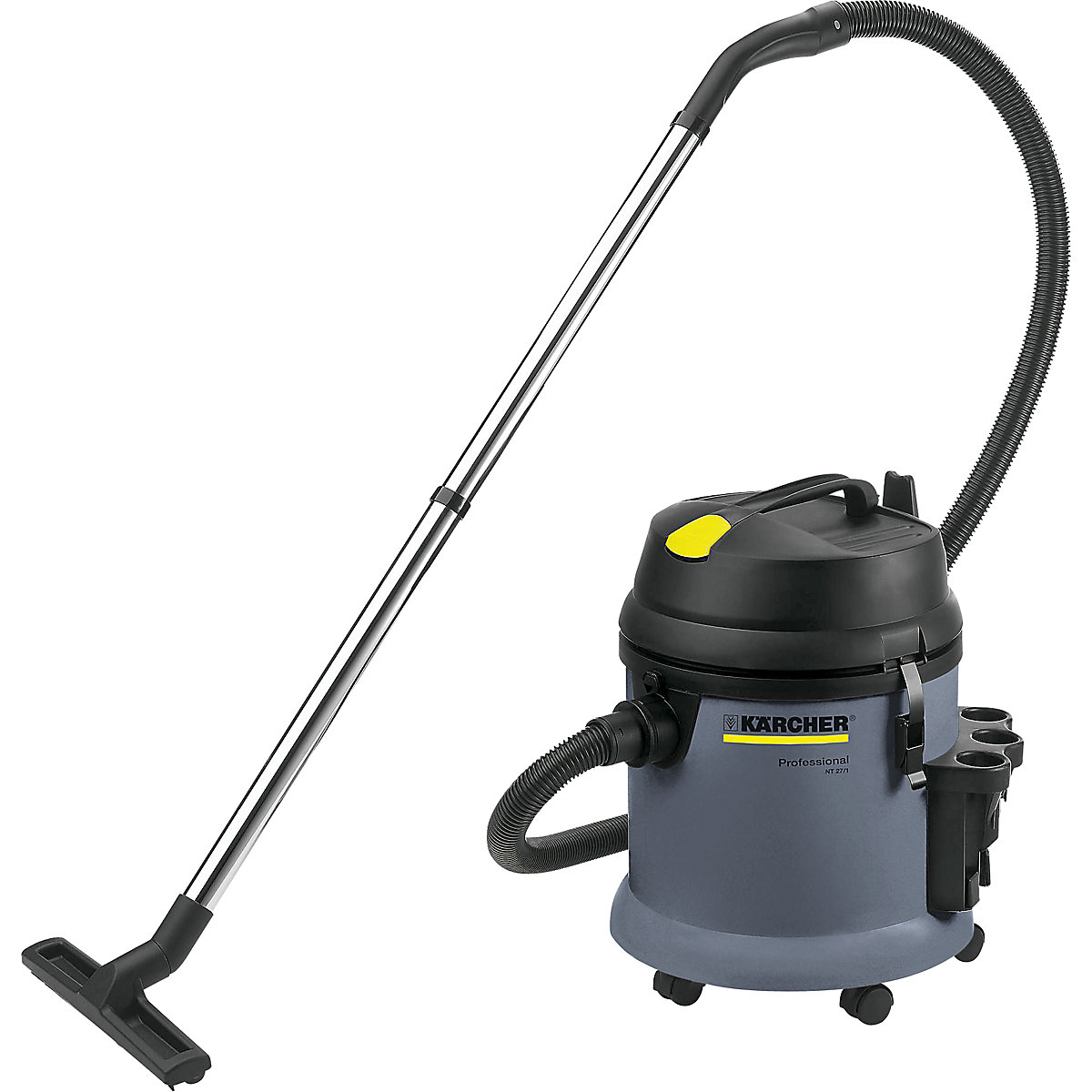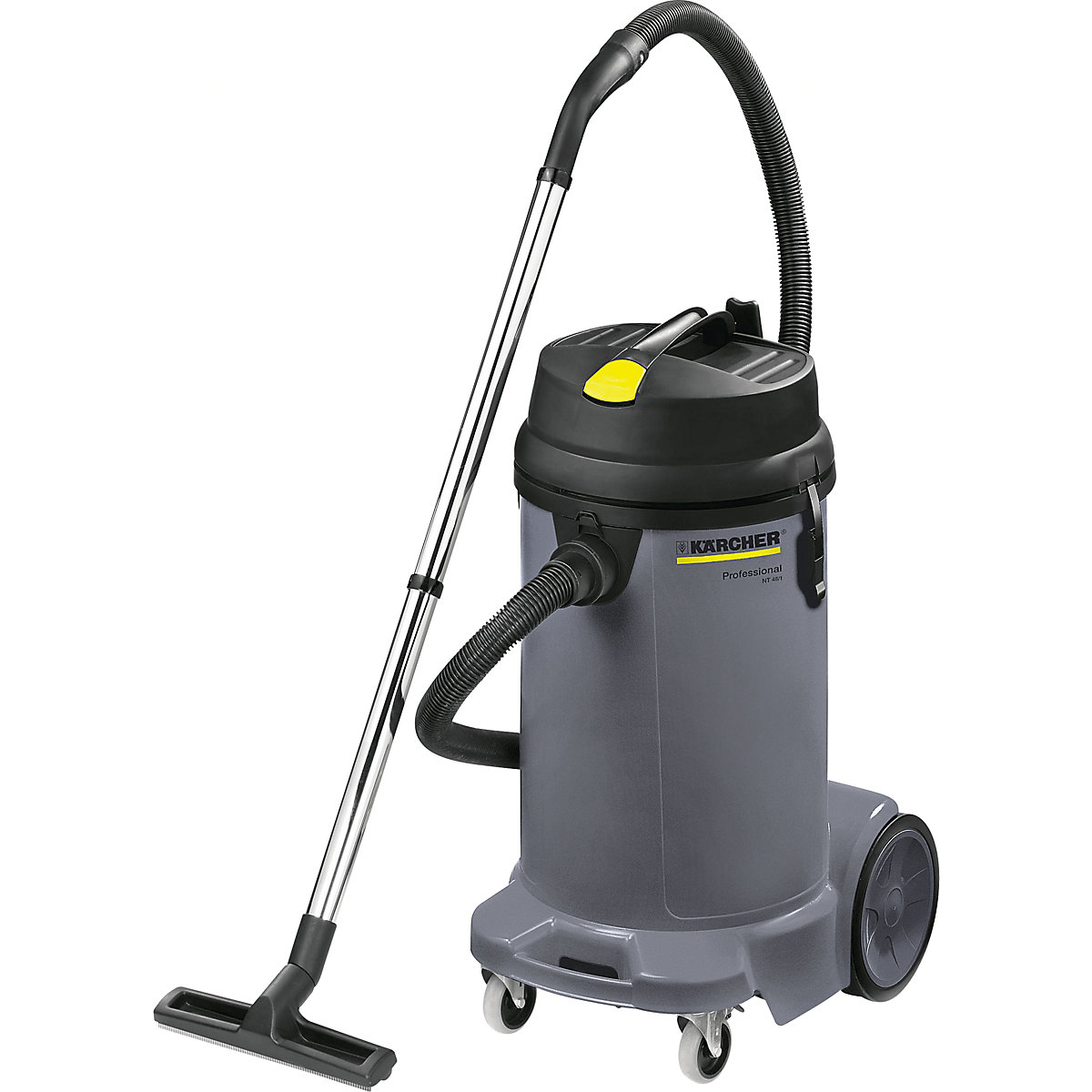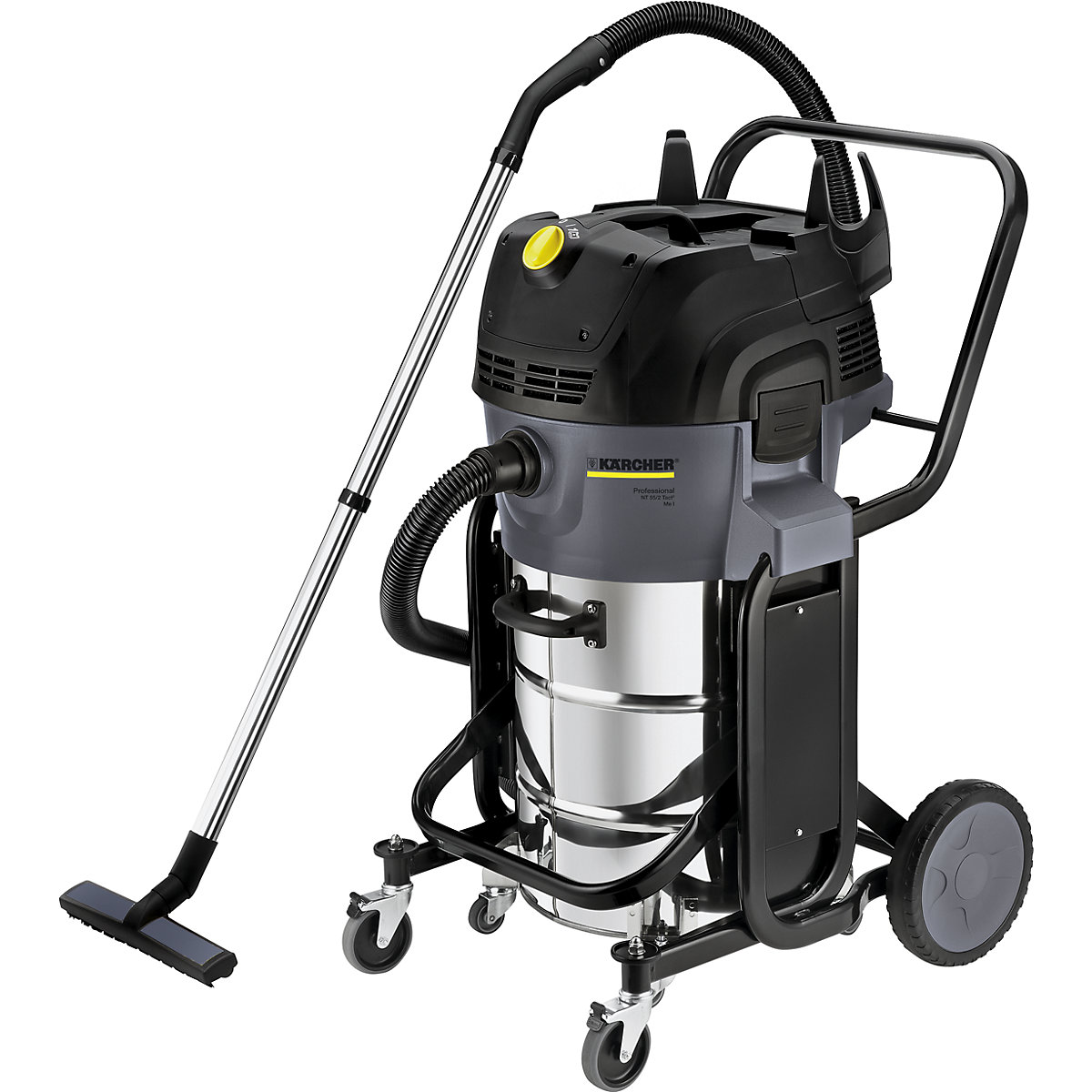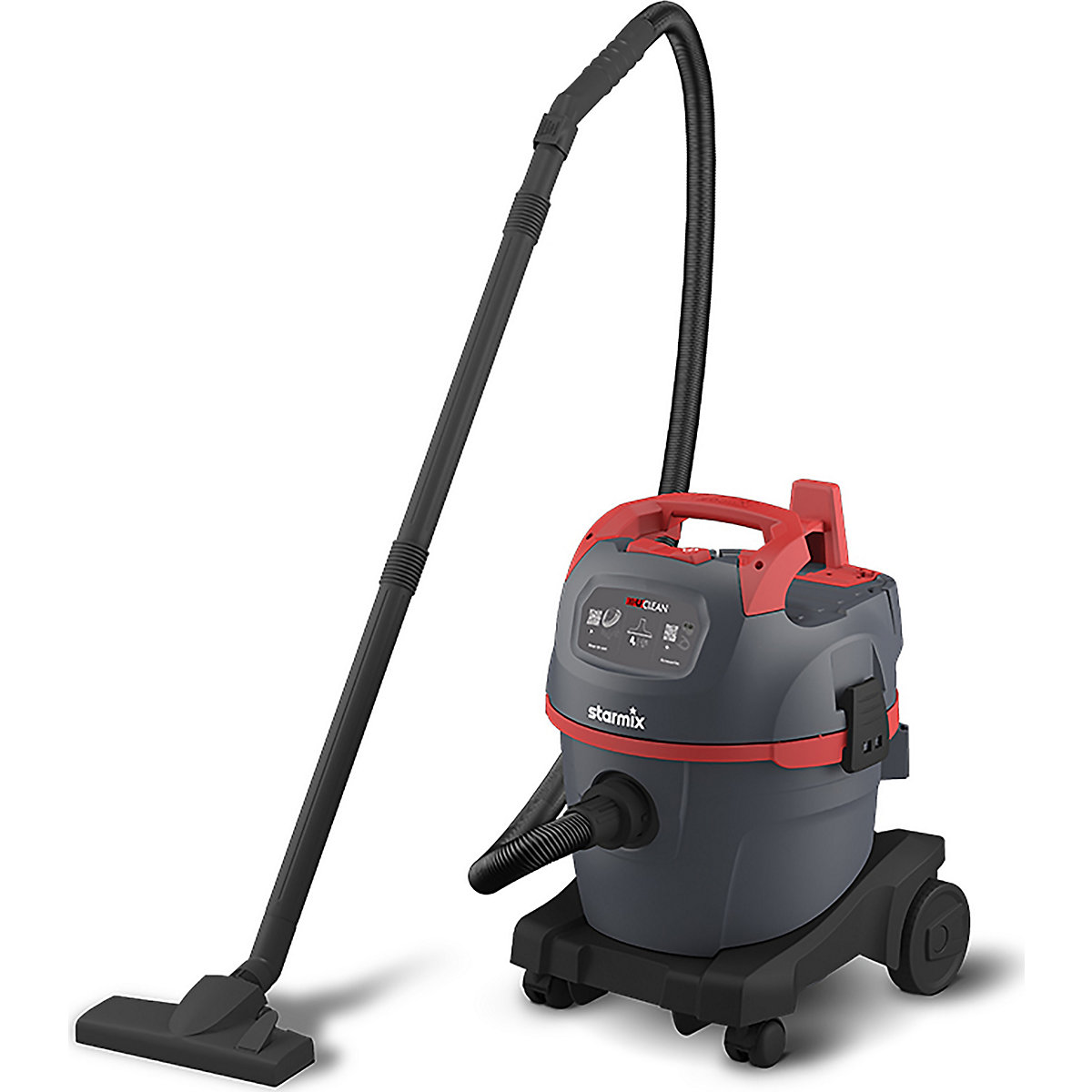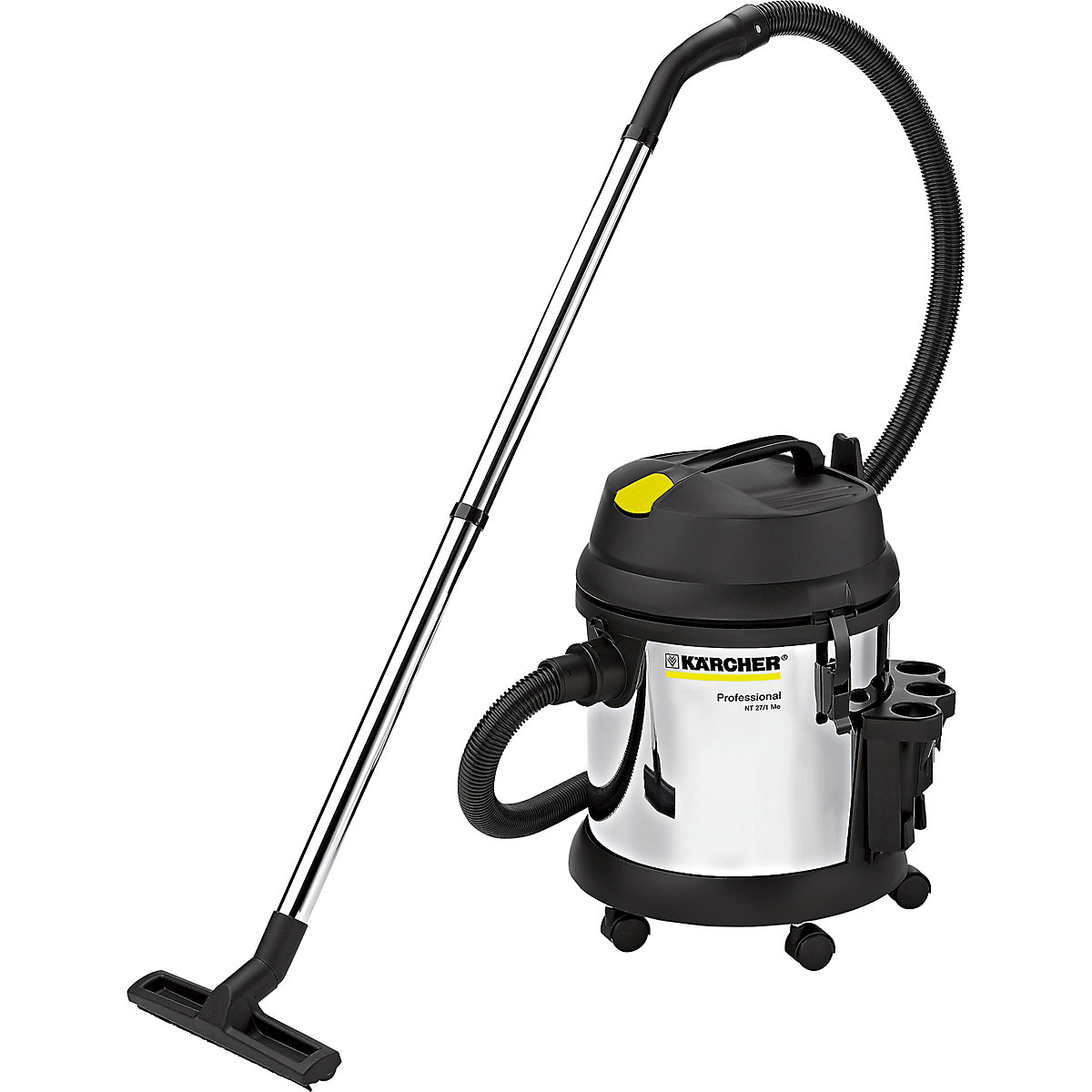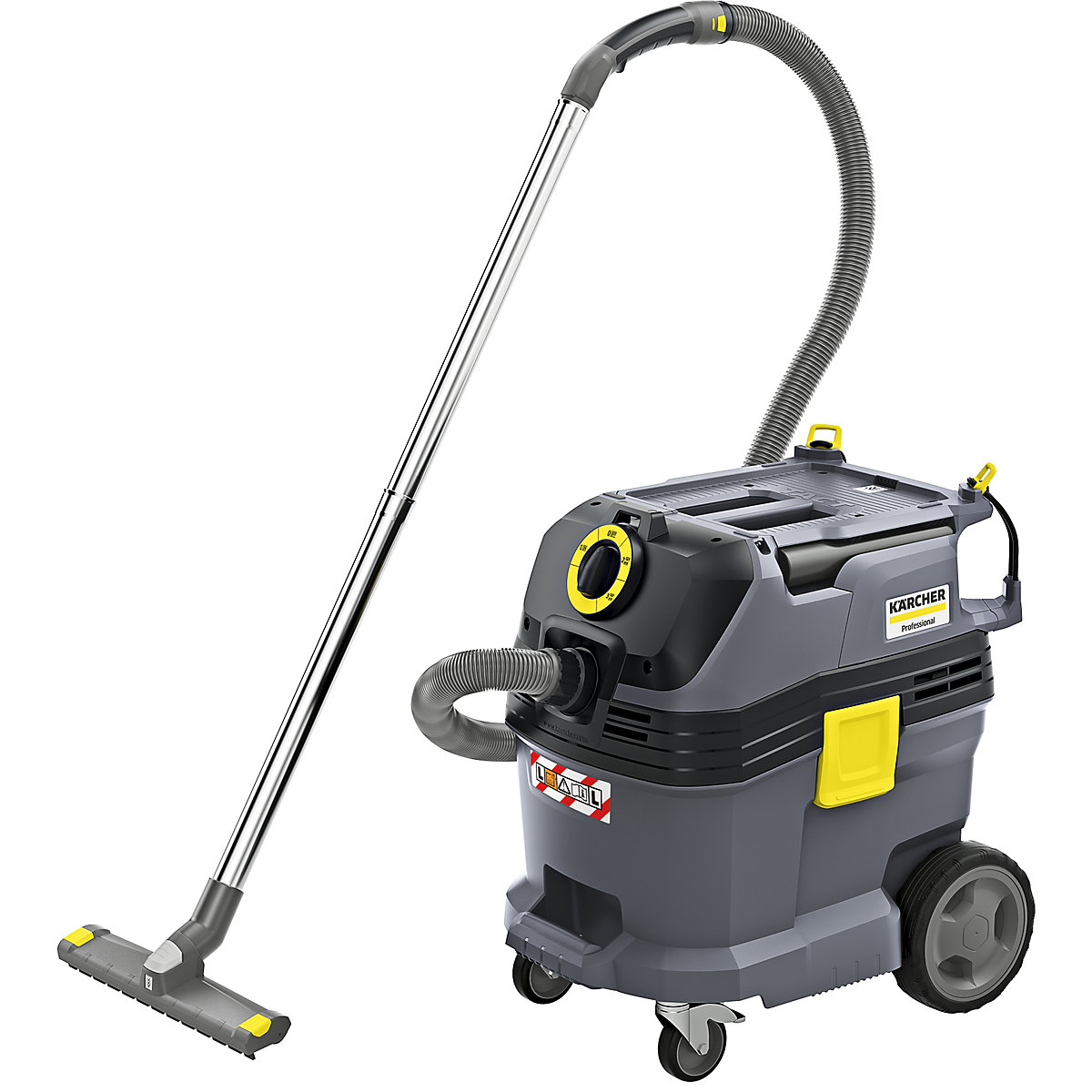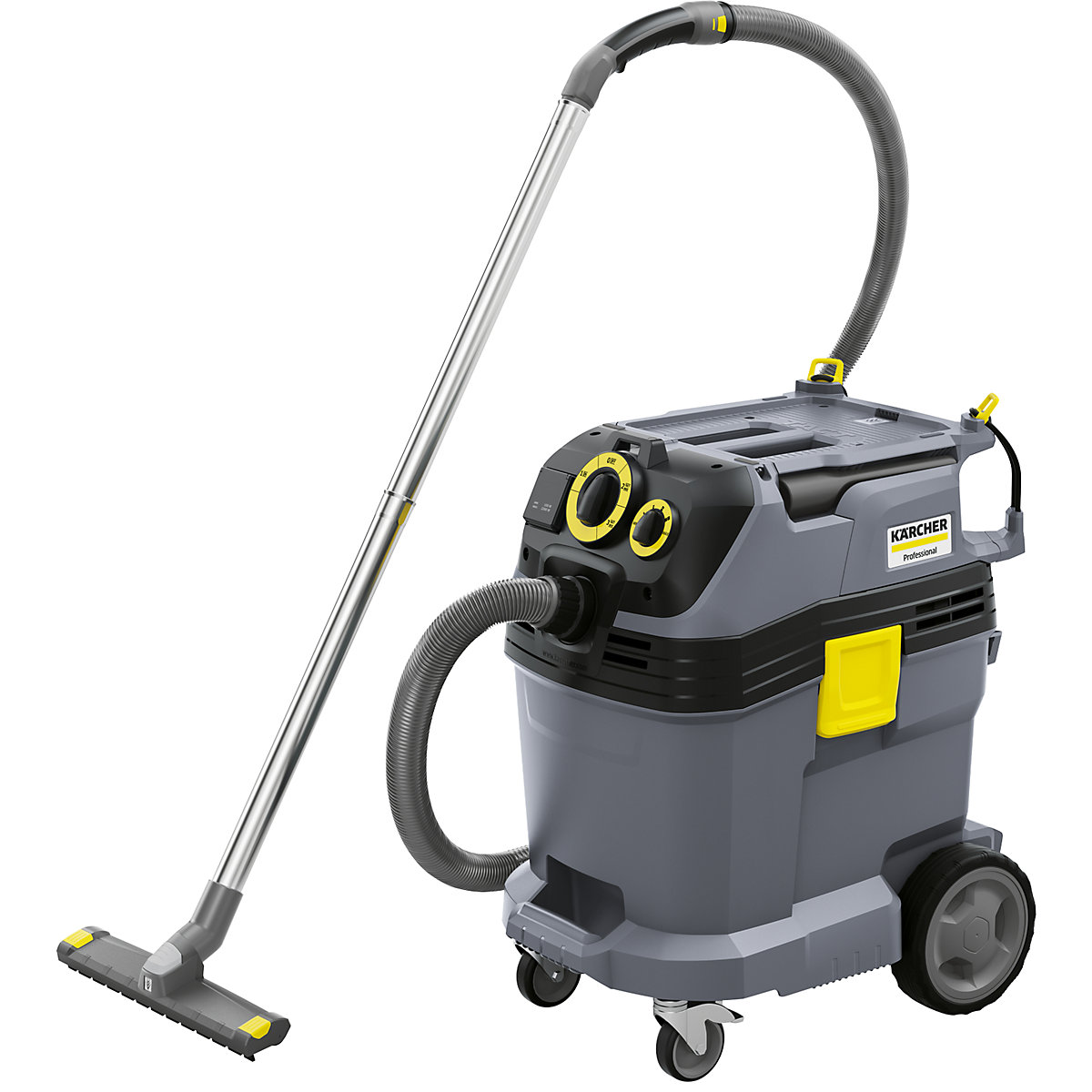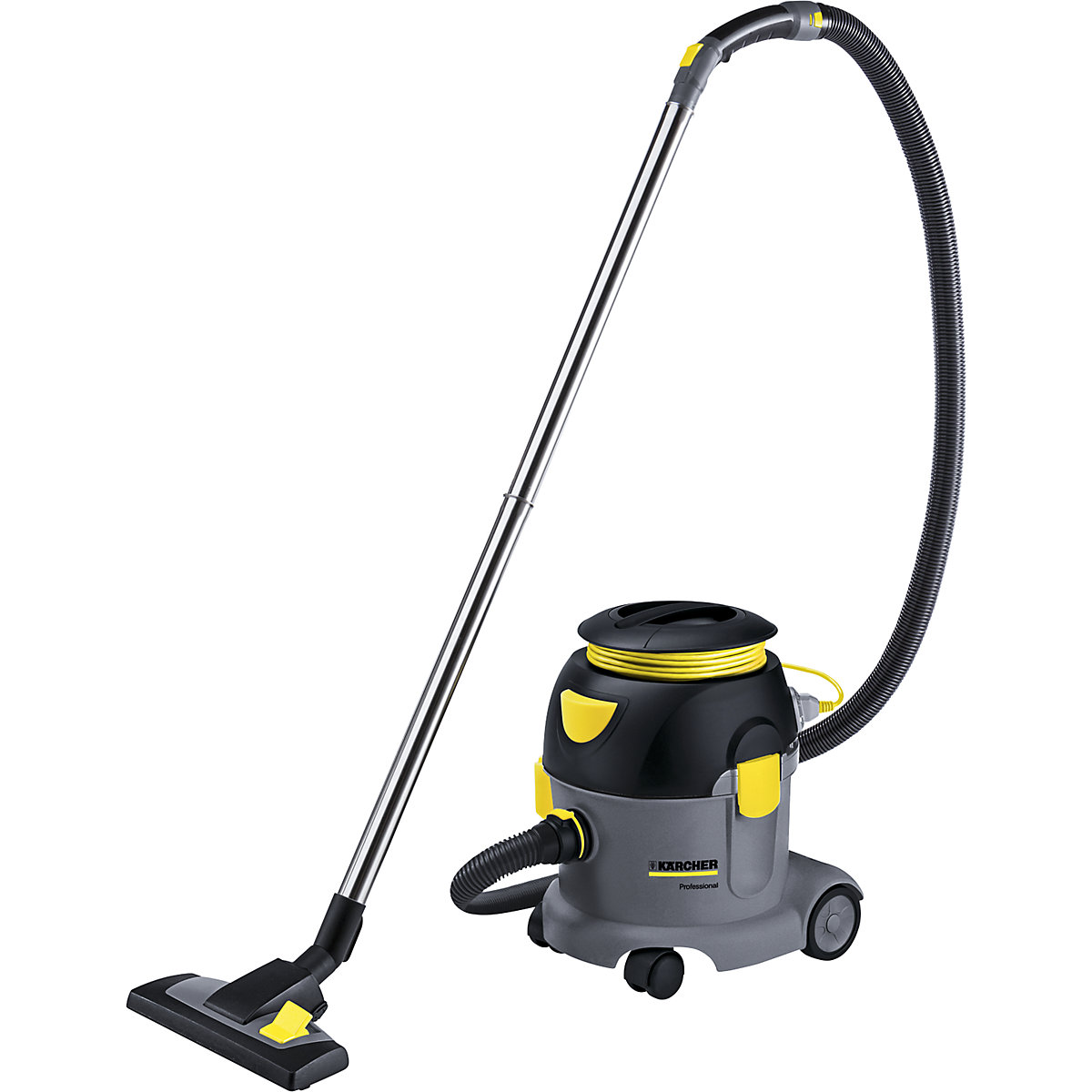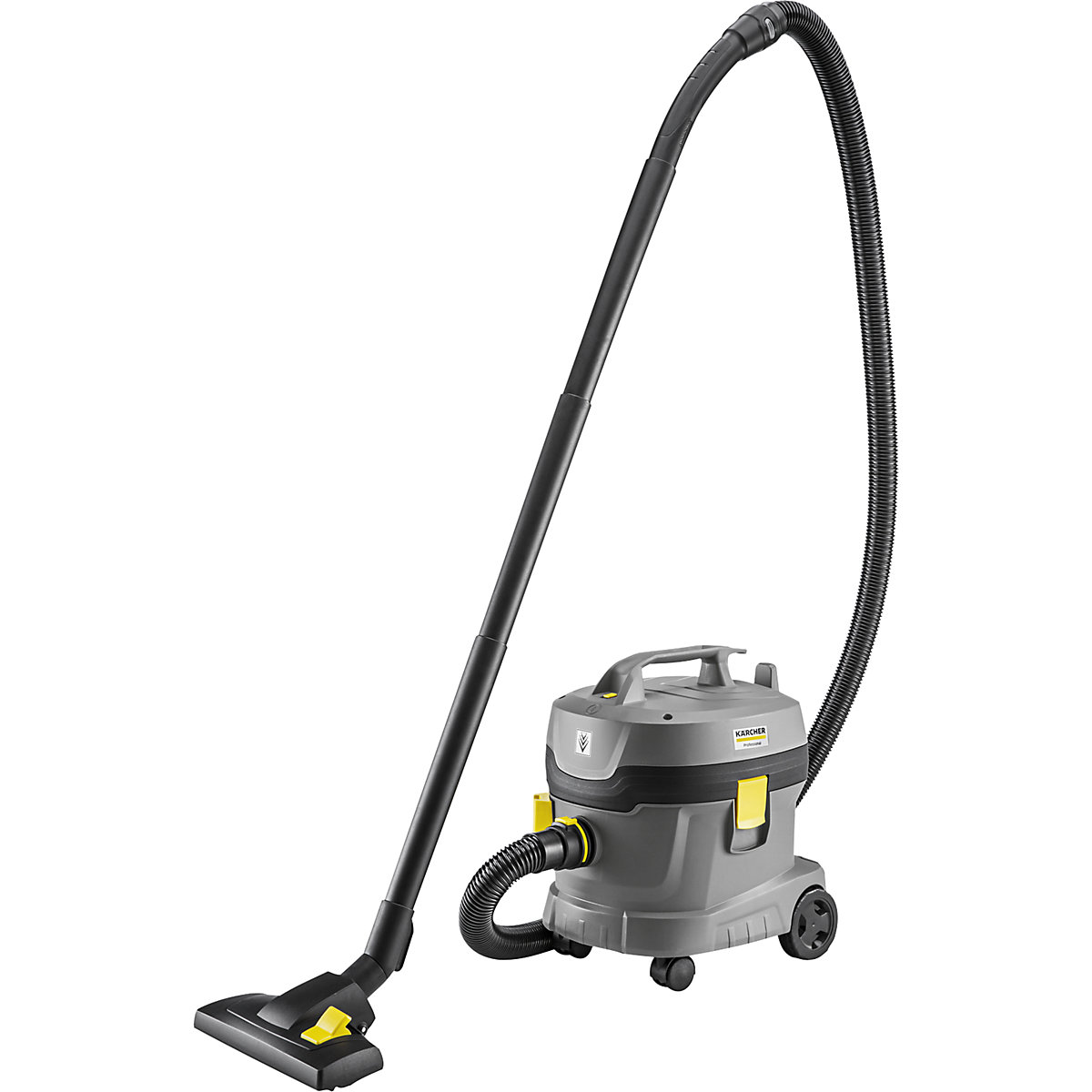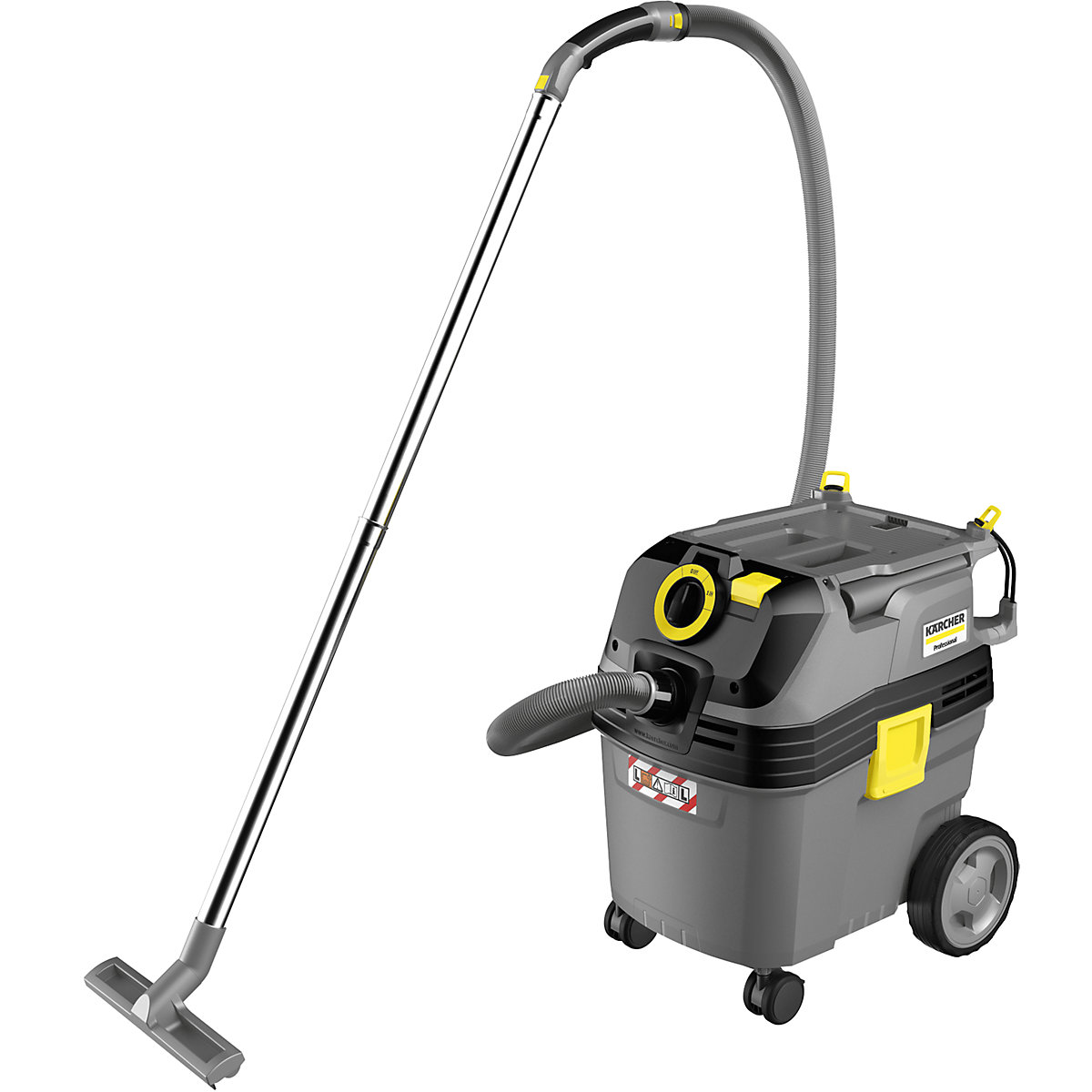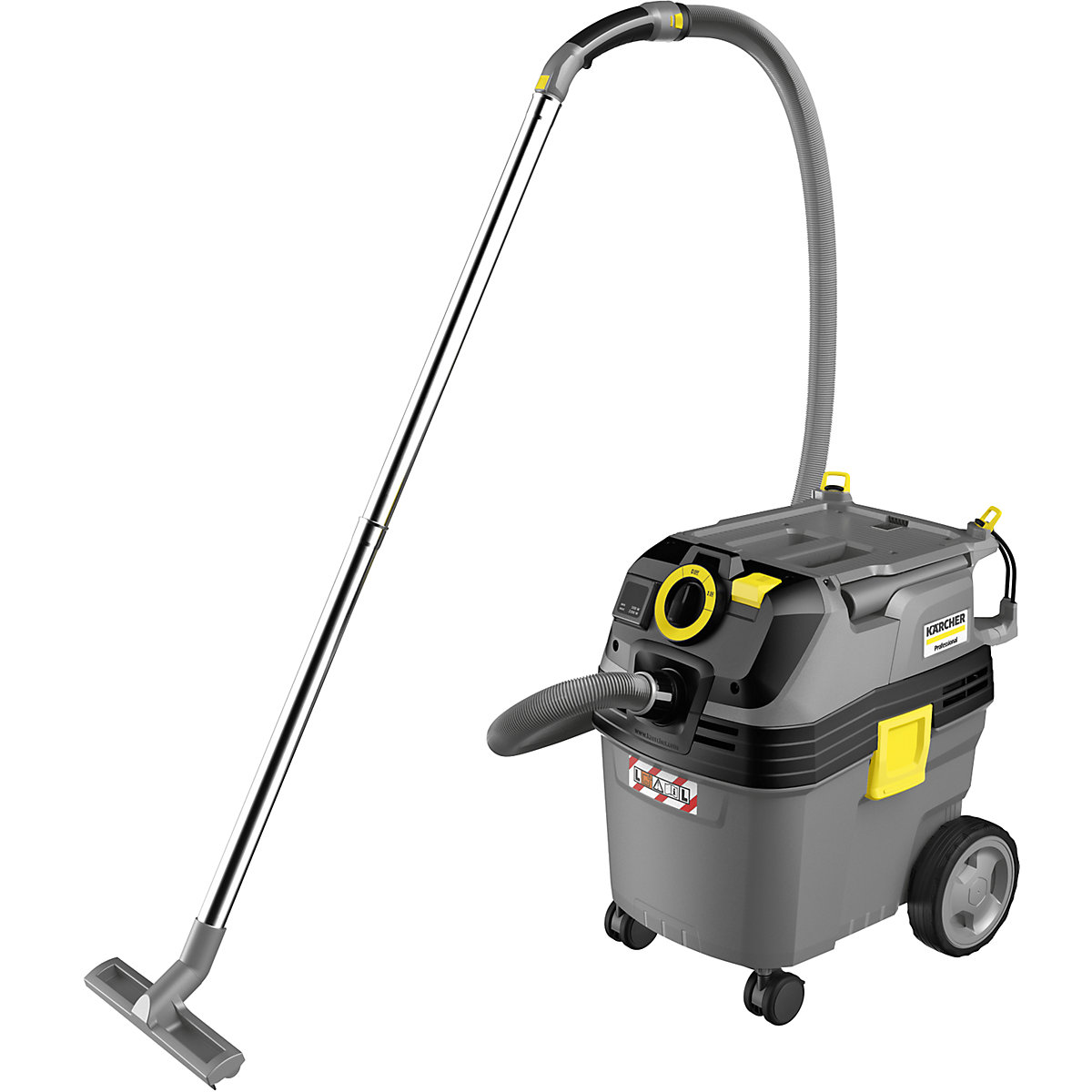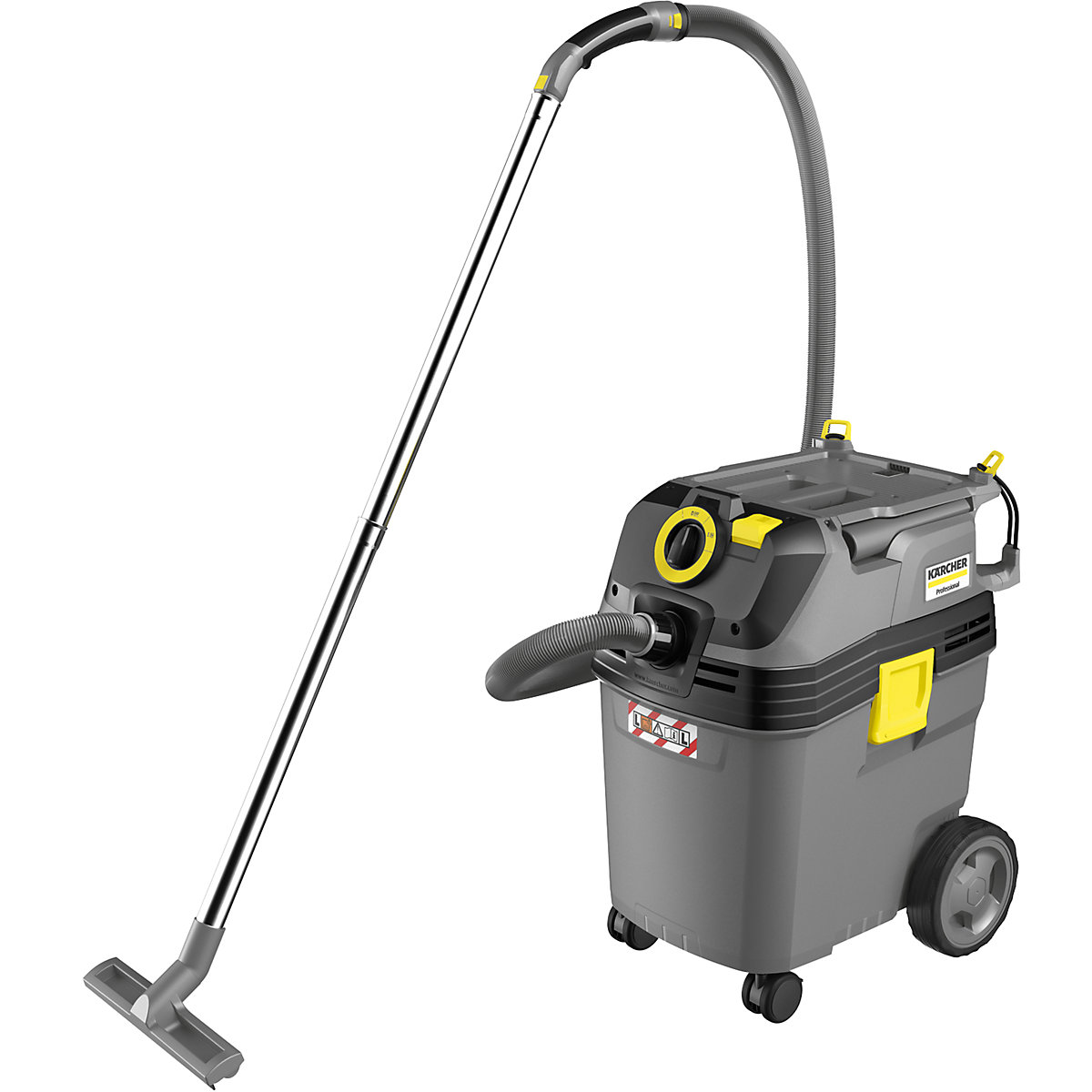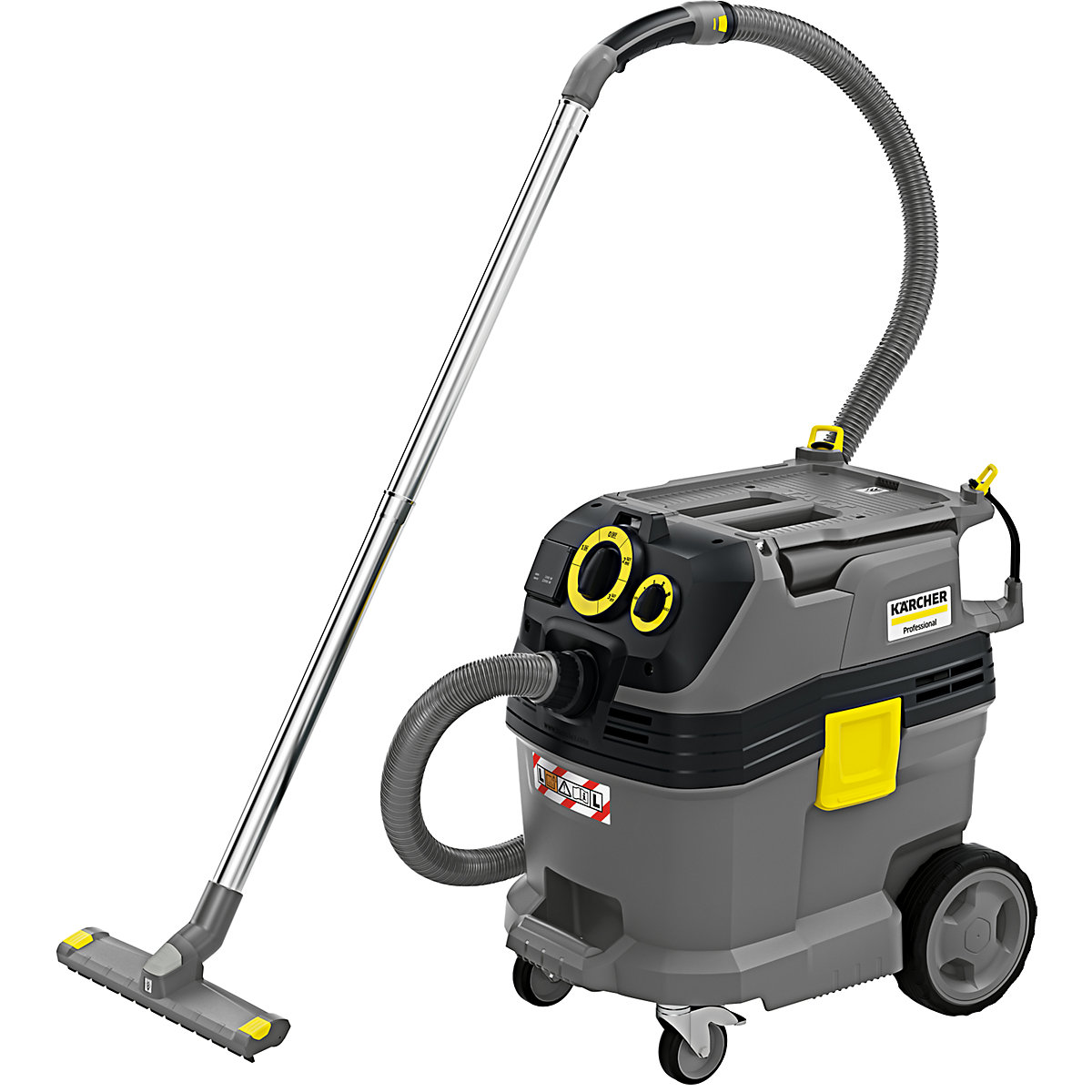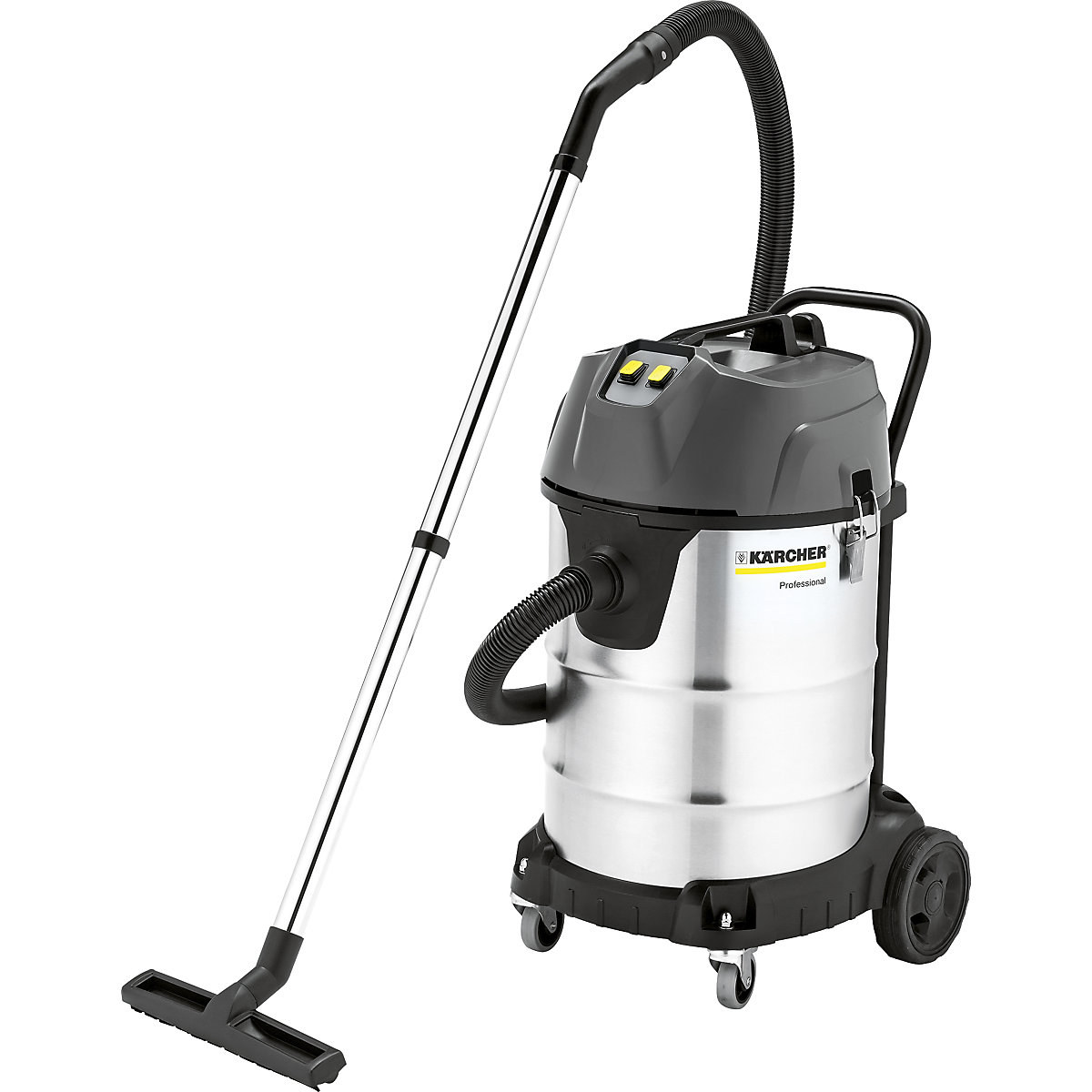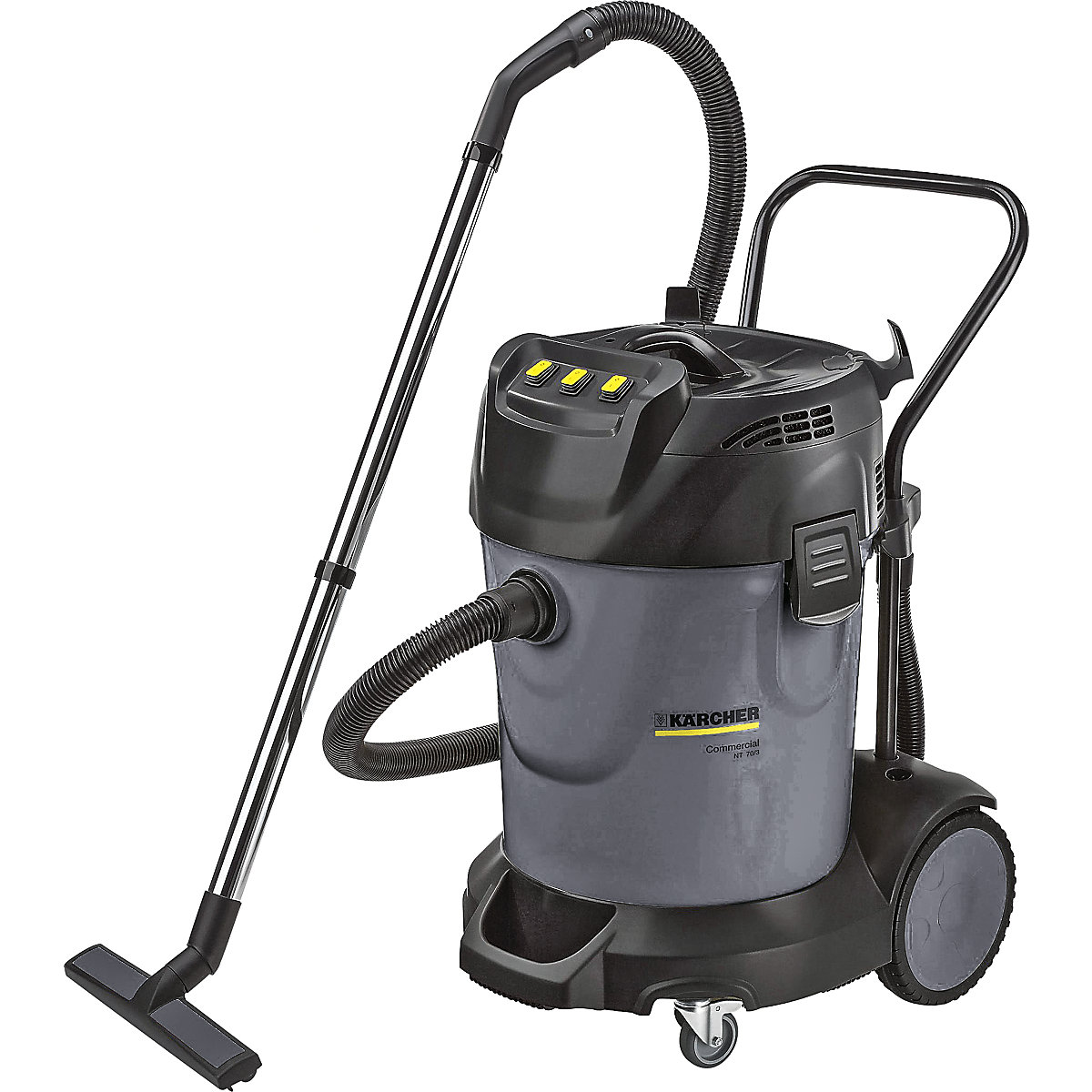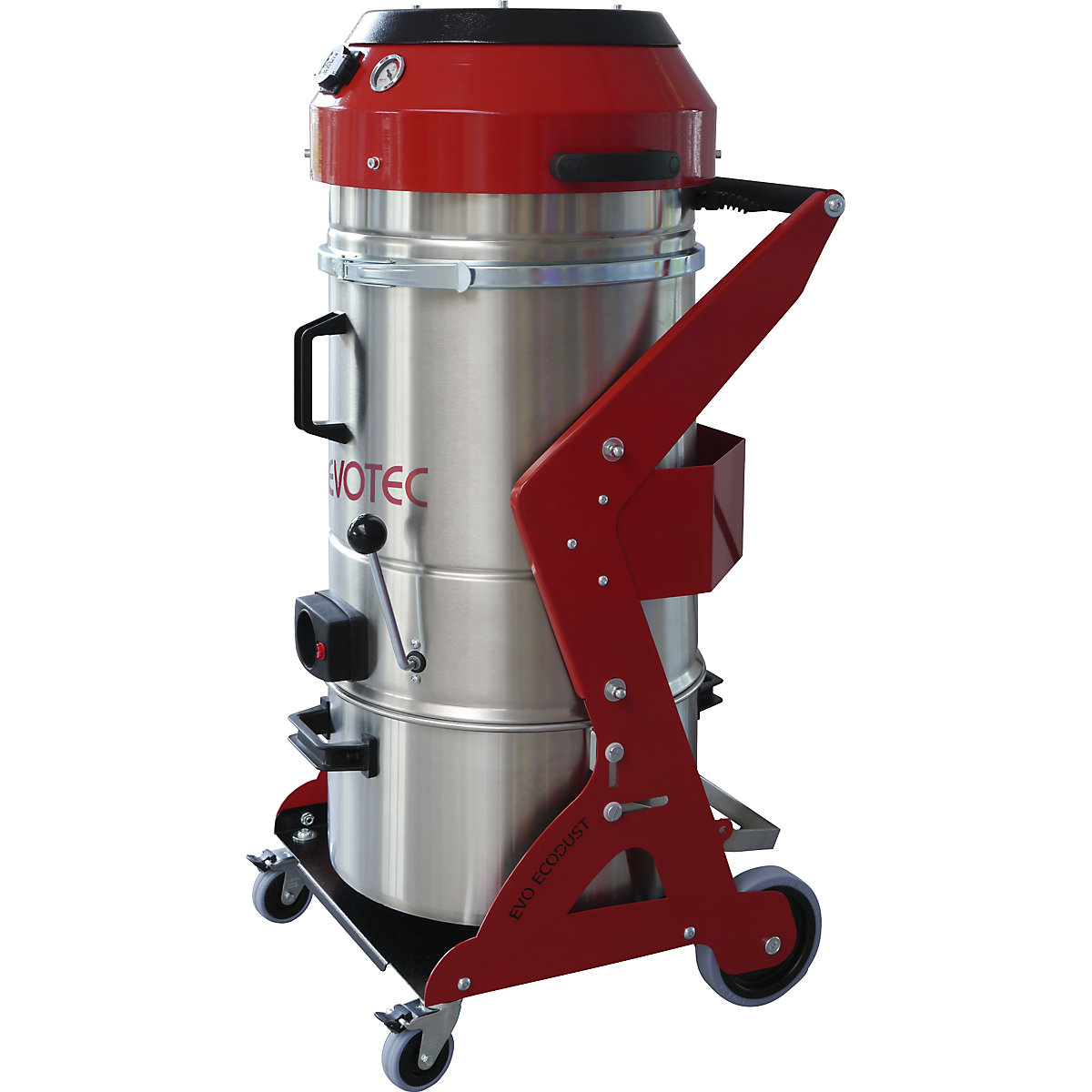Information on vacuum cleaner selection and dust categories
Dust and dirt are always present. Vacuum cleaners are an aid for daily cleaning and in production areas. They are indispensable for improving working conditions and for ensuring that quality standards are met. The production of dust and dirt is inevitable in manufacturing and processing operations. Larger dust particles quickly settle, fine dust particles float for extended periods in the breathable air and are inhaled deeply into the lungs, where they are deposited. Over time, dust compromises health and/or the quality of production results.
Differences in equipment
- Equipment design: Can be monoblock - mobile or static - or split into multiple components.
- Filter unit: Multi-stage filter, cartridge filter, plate filter, etc.
- Dust class: Also for hazardous dusts in dust classes M, H (more details can be found at the end of this document)
- Explosion protection: Vacuum cleaners according to design 1 (B1)
- Motor power: Well constructed motors from 1.5 to 13 kW. These vacuum cleaners can also be used to reliably operate small central vacuum systems as well as large pipework systems up to 300 m long.
- Separation: Pre-filters serve to protect the main filter. Downstream filters are preserved by preventing them from coming into contact with hot materials and liquids. In addition, they also make it easier to dispose of larger quantities.
- Mobile waste containers with or without lifting mechanism, hinged bottom, BigBag, tilting tray etc.
- Duty cycle: 2 - 3 hours (single phase ) powered machines - up to 24 hours (three phase) machines.
Applications
(Examples, where a guarantee of completeness is not provided, uses for hazardous substances must be considered on individual basis)
Observe potential hazards!
General rules: If a source of danger (e.g. vacuuming of solvents, chemicals, asbestos, aluminium, wood dust etc.) is, or has been recognised, this must be taken into consideration when selecting a suitable industrial vacuum cleaner. Compliance with ATEX regulations and ATEX zoning will have been established after carrying out risk assessment.
Vacuuming of predominantly fine dust:
Choose a vacuum which is not too powerful, but has a large filter surface area (unless it is for dust with a high specific weight, such as metal dust etc.). Note: Consider hose length. The filtering efficiency of the filter must be taken into consideration, so that the vacuum cleaner collects dust without releasing significant amounts back into the environment. Is the dust hazardous to health? If yes, then choose an absolute filter (HEPA). Is the dust explosive? If yes, then choose a B1 vacuum cleaner, displaying an EX certification symbol.
Vacuuming a mixture of fine dust and larger particles:
Same as for vacuuming fine dust, but choose a vacuum with a mechanical pre-filter (cyclone) to prevent damage to the filter. Select a more powerful vacuum cleaner with a large filter surface area. The large filter surface area is necessary in order to prevent premature saturation of the filter, which in turn maintains consistent vacuum power. Guidelines for dust classes M, H and B1 should be observed here as well.
Vacuuming of predominantly large particles:
Select a more powerful vacuum cleaner with higher collection capacity.
Pre-filtration is not nearly as important for this type of use. The power of the device should be adapted to suit the diameter of the hose, length of the hose and type of material being vacuumed. A standard device is usually sufficient. If the device will be used in a potentially explosive environment, it is also important to observe B1 (ATEX).
Customer would like to vacuum liquids mixed with chemicals (milder cleaning agents):
The selection of a device with a stainless steel container is recommended in most cases. For corrosive media, the behaviour of the medium must be precisely analysed and consideration given to requirements that will be put on the device.
Customer would like to vacuum oil or cutting fluid which contains swarf:
Vacuums suitable for swarf collection are required to be fitted with integrated cyclone plates to separate swarf from liquid for vacuuming CNC machine heads, drills or cutting machines.
Normal wet/dry vacuum cleaners will be overburdened if used to vacuum these materials, as the atomisation properties of the liquids are different than those of water. Vacuum cleaners for shavings are fitted with a different type of inlet, in order to better control atomisation of the liquids.
Customer would like to vacuum material in a potentially explosive environment created by gases or fumes:
For safety reasons, a compressed air vacuum cleaner (with ATEX) is recommended in most cases.
However, each specific case should always taken into consideration. The examples provided here are only to be used as a reference!
There are also a few types of dust (e.g. extremely fine aluminium and magnesium dusts, petrol etc.) which can be problematic. These can also be removed with GS-tested vacuums, but only under certain conditions.
Important notes:
It is important to understand that high wattage alone will not yield the highest performance. The right ratio of vacuum pressure to airflow is critical.
A high airflow rate means higher speed of the material being vacuumed.
Higher vacuum pressure is required for vacuuming heavier materials and for vacuuming from extended heights (e.g. down into pits).
Furthermore, the diameter of the hose also has a critical effect on the vacuum cleaner's air flow/vacuum pressure ratio. The hose sizes which are supplied as standard are in the medium/average range, which in most cases will ensure good performance of the vacuum, yet not interfere with the passage of materials through the hose and into the vacuum.
The use of a well proportioned primary filter is necessary to ensure consistently good vacuuming capacity. Pre-filters can reduce strain on the primary filter. In order to keep exhaust air as clean as possible, absolute filters HEPA (in dust class H) can be installed downstream if necessary.
Dust categories
Until 1997 (with a transitional period through 06/2002), national directive ZH 1/487 from the German Federal Centre of Accident Prevention was the applicable law for the classification of dust classes, and thus the basis for safe removal of materials and dust. This national regulation has been replaced by EU standard EN 60335-2-69. This regulation is applicable for all of Europe.
The category of use is defined according to level of risk to health and the explosive potential of a dust:
The WEL level is also taken into consideration: The WEL limit specifies the maximum Workplace Exposure Limit. The lower the WEL limit, the more hazardous the dust is. (Note: The term WEL has replaced the previously used term MWC - Max. Workplace Concentration).
Additional information about materials and dusts, as well as classifications of machines to be cleaned of dust, can be obtained from the Health & Safety Executive (HSE).
Dust classes according to EN 60335 -2-69
Dusts with max. workplace exposure limit (WEL) > 1 mg/m³ = dust class L
Dusts with max. workplace exposure limit (WEL) ≥ 0.1 mg/m³, wood dusts = dust class M
Dusts with max. workplace exposure limit (WEL) < 0.1 mg/m³, carcinogenic dusts, pathogenic dusts = dust class H


